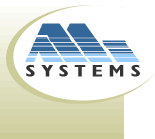|
Industrial engineering can trace its origin to the Industrial
Revolution, and in particular, to the initial studies performed in the
British textile industry.
The development and refinement of work measurement systems
have closely followed the general movement toward the scientific study
and solution to business management problems. We are especially indebted
in the United States to Frederick Taylor, Lawrence Gantt, Frank Bunker,
Frank and Lillian Gilbreth, Harrington Emerson, and others, for their
pioneering efforts in this field near the turn of the century.
Frederick Taylor is generally recognized as the pioneer
in the study of shop methods and the timing of jobs as tools for management
and cost control. Taylor's principles, which form the basis of modern
industrial management, can be briefly stated as follows:
1. Each worker is given a 'definite task' — the
task prescribed by management in the form of a job description.
2. Each defined task is to be performed in a 'definite
time' — the time determined by Time- study Procedure.
3. Each defined task is to be performed in a 'definite
manner' — the defined manner given to the worker in the form of an
instruction card.
In making his principles operate effectively, Taylor
found it necessary to introduce a system of paying rewards for accomplishment;
thus, the introduction of Wage Incentives into industry. Although
Taylor always stressed the importance of method, users of his system gradually
began to de-emphasize this important factor. Frank and Lillian Gilbreth
recognized the importance of method and thus devoted themselves to the
field of motion study. Their detailed laboratory studies of motions and
methods, defined in THERBLIGS, form the basis for subsequent Predetermined
Time concepts and systems.
The first practical attempt at predetermined time was
made by A. B. Segur prior to 1930. This work, however, was mainly confined
to Segur's own clients and never received industry- wide recognition.
A subsequent approach was developed by Industrial Engineers at RCA and
was called Work Factor, which is still a popular system in use today.
In about 1940, H. B. Maynard and his staff at Westinghouse did research
and development leading to a system popularly known as MTM (Methods-Time-Measurement).
A book describing this system was first published in 1948. Predetermined
time systems have found popular usage in recent years for both direct
job application and development of standard data. There have been, however,
certain inherent weaknesses associated with such systems in application.
Copyright © 1996-2011 PCAS/Manufacturing Integrated Systems |













